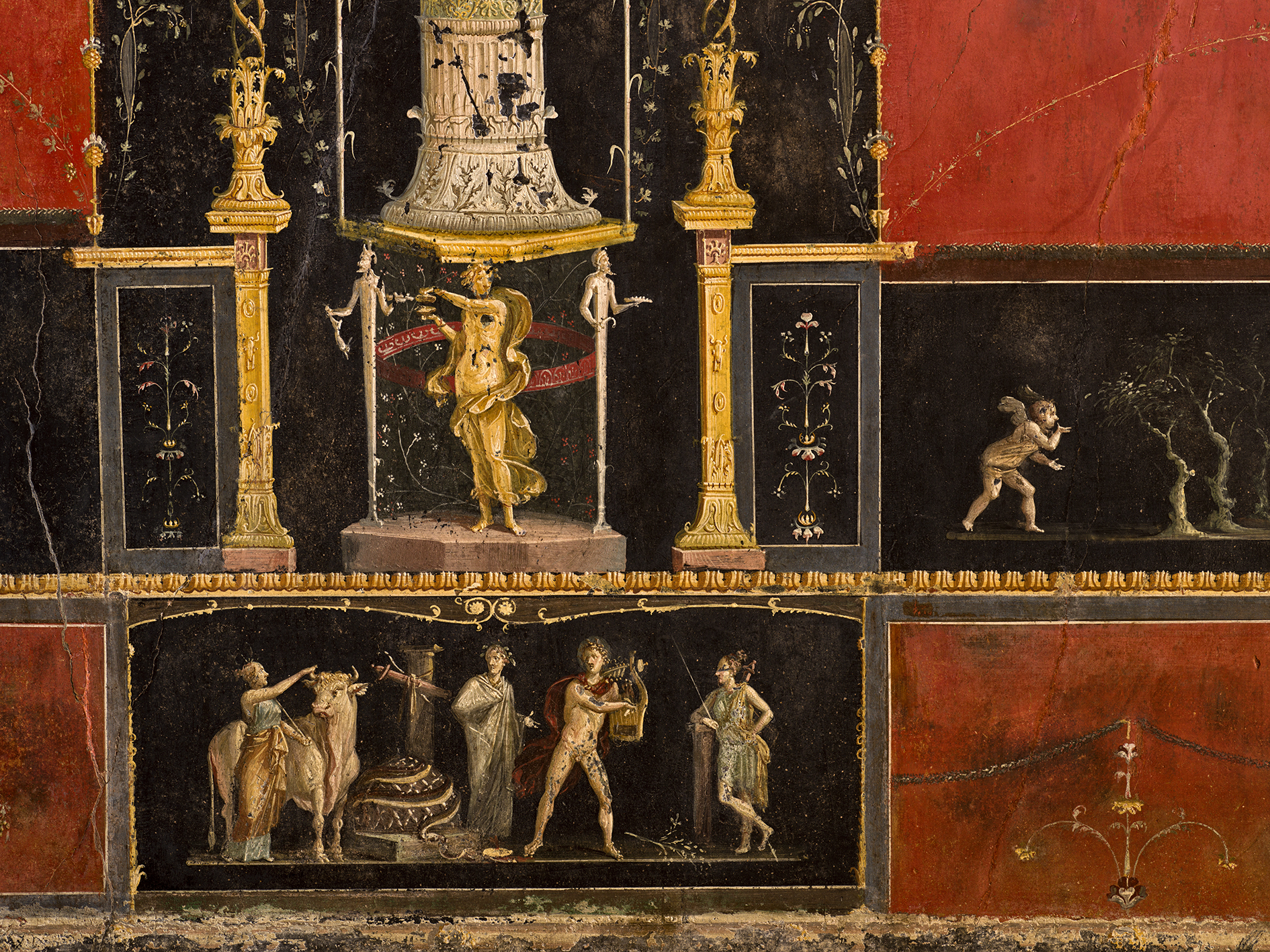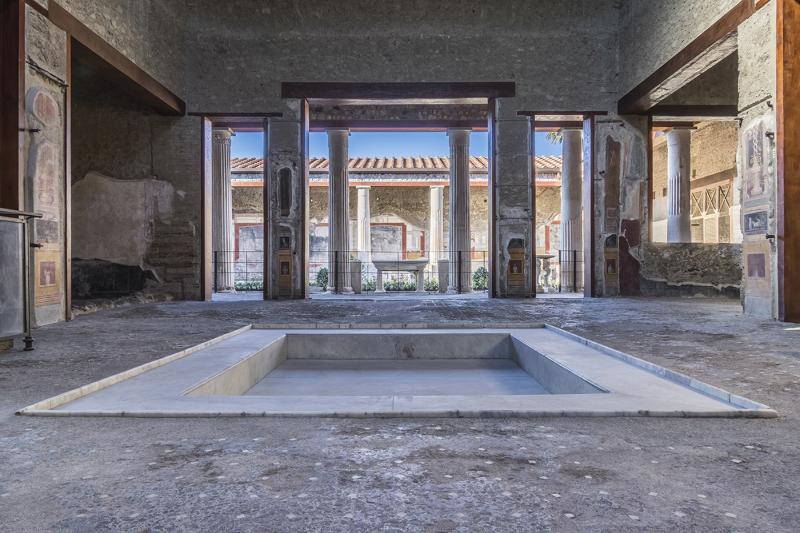Pompeii’s Roman-era domus, House of the Vettii, referred to by the archaeological park’s director Gabriel Zuchtriegel as “the Sistine Chapel of Pompeii,” is welcoming visitors again after a 20-year closure (and an only partial reopening in 2016).
Italian culture minister Gennaro Sangiuliano, present with Zuchtriegel and other cultural dignitaries at the inauguration, called the reopening the “crowning achievement of a multi-year journey of recovering the Pompeii excavations.”
About the House of the Vettii

One of the most famous and richly decorated spaces of Pompeii, the House of the Vettii became a symbol of the economic prosperity of its wealthy owners, Aulus Vettius Restitutus and Aulus Vettius Conviva, who, as former slaves, represented a kind of “social mobility that would have been unthinkable two centuries earlier,” Zuchtriegel says. The brothers are thought to have made their fortune in the agricultural and wine trade, and spared no expense in adorning the dwelling with mosaics, sculptures and frescoes in what art historians have termed the “Pompeiian Fourth Style.”
The House of the Vettii is famed for its mythological and erotic — or, at times, explicitly physical but not necessarily titillating — imagery. It is particularly known for its entryway fresco of the erect Greco-Roman figure of Priapus (above); a second similar scene is mirrored in marble. Designated as the site’s protector, Priapus symbolizes virility, fertility, health, good business and wealth, and is said to ward off bad luck.
An erotic fresco-filled room in the domestic quarter adjacent to the kitchen was thought to be used for prostitution — a theory legitimized by an inscription at the home's entryway about a woman, Eutychus, offering her services for two donkeys. (Pompeii officials say that until just a few days before the reopening, an iron door designed to allow entry to adult men only cordoned off the frescoed space.)
Beyond the era erotica, spread across the five-part atrium-and-peristyle Roman house are many other treasures, including a dozen surviving frescoes of mythological scenes depicting themes of divine reward and punishment, thought to be modeled after Greek originals; a frieze of Cupids carrying out the economic activities of the time, from perfume making to selling wine; and intricate fountains and sculptures in the garden, the site’s centerpiece.
Buried by the eruption of Mount Vesuvius in 79 CE, the house — along with villas in nearby Herculaneum and Ercolano — remained obscured before being discovered in the late 16th century. Widespread and careful excavations took place in earnest during the 18th and 19th centuries, with preservation work continuing to this day.
The restoration and reopening

Overseen by the Italian culture ministry's Museums director Massimo Osanna, the House of Vettii restoration team comprised archaeologists, architects, engineers, geologists, vulcanologists and restorers. Efforts were part of a wider operation, the €105 million Great Pompeii Project, to stabilize the park’s vast excavation fronts.
Much of the work focused on the challenging removal of wax layers on frescoes, which were added by well-meaning past restorers in a method that ultimately proved detrimental, obscuring fresco details.
Another key component of the project was the full roofing of the house, which began in 2020.
Additionally, in the garden, copies of original sculptures — including a noteworthy one of that same well-endowed deity and house protector, Priapus — were added to recreate its early appearance. (Originals are now housed in the park’s exhibition spaces and storage areas.) Plants from the period reproduced in the park’s nursery have also been added as part of a larger effort to partner with local farmers and producers in more accurately and vividly recreating the green areas of the ancient city.
With the glories of the space now on full display, director Zuchtiegel called the House of the Vettii no less than “the history of the Roman world enclosed in a house — the ‘house museum’ of Romanity.”
If you go
Pompeii Archaeological Park
Entrance: The House of the Vettii is located in Region VI near the Vesuvian Gate and can be accessed from Vicolo dei Vettii.
Website









